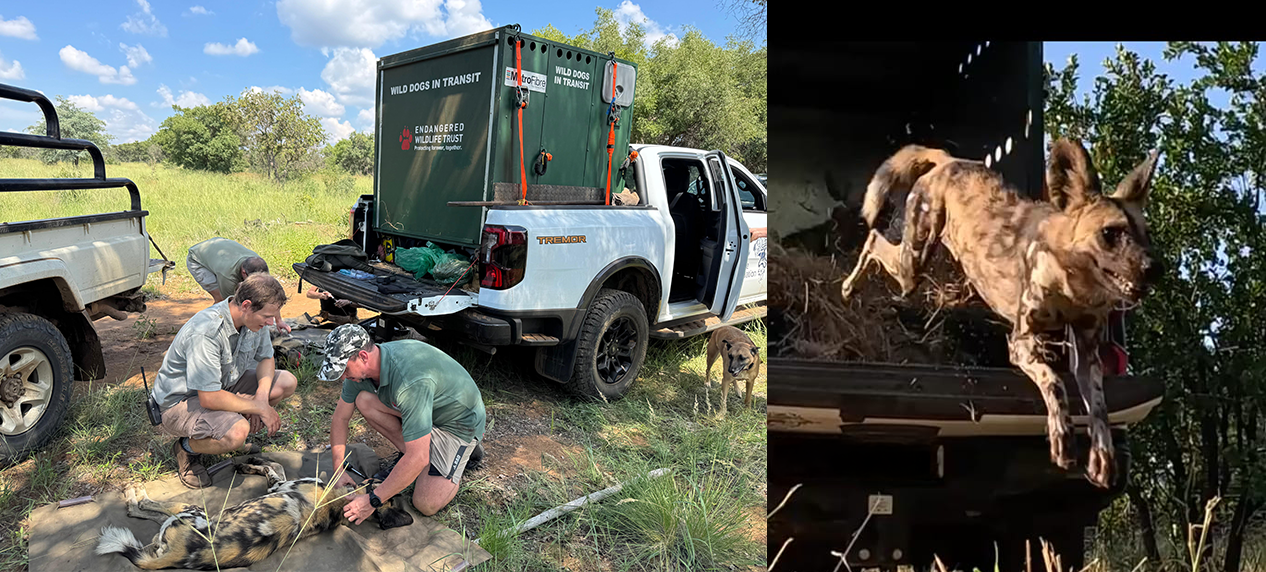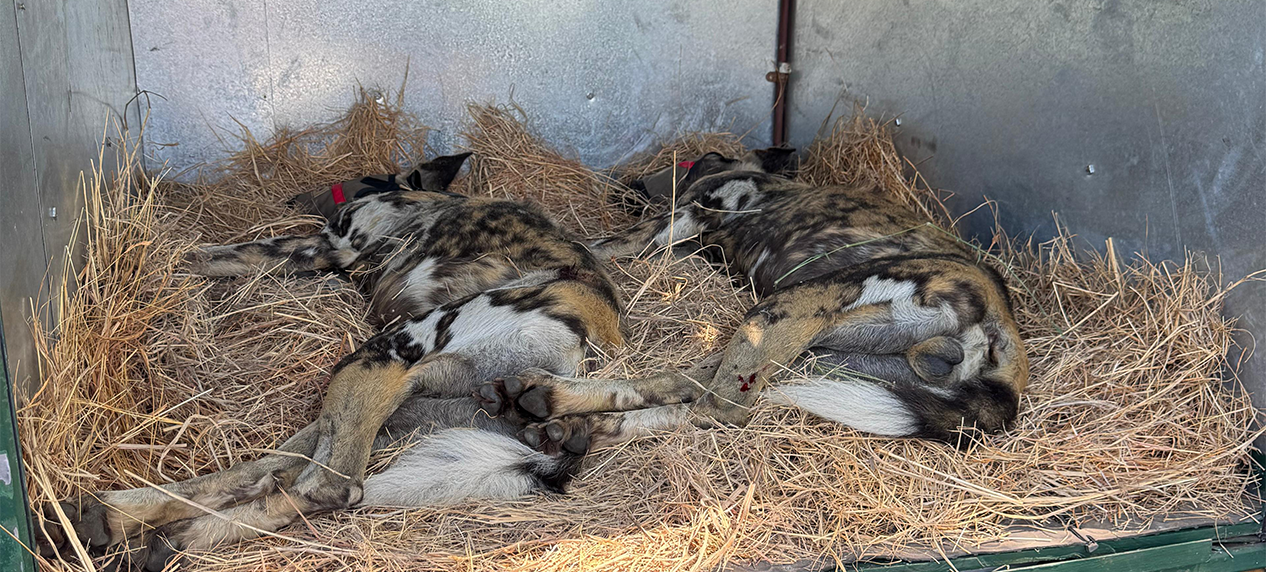A Wild Dog Valentine Story
By Cole du Plessis

The International Union for Conservation of Nature (IUCN) defines ‘relocation’ as the deliberate movement of organisms from one place to another for conservation purposes. This is also known as a conservation translocation.
In the space of Wild Dog management, a conservation purpose can include several different activities: a reintroduction, a genetic swap or a population supplementation. In the case of the managed metapopulation tool that we’ve implemented to grow range distribution for Wild Dogs in South Africa (the EWTs Wild Dog Range Expansion Project), we sometimes do relocations where we move Wild Dogs to temporary holding to bond new packs or bring them to safety if they have been exposed to human-animal conflict.
In February, the EWTs Carnivore Conservation Programme relocated two male Wild Dogs from Lapalala Wilderness Reserve to Rietspruit Game Reserve. The two males were two-years old and had left their natal pack to go in search of unrelated females, with the hope of forming a new pack of their own. They were fondly nicknamed ‘Starsky and Hutch’. When Wild Dogs enter this phase of dispersal, they can cover several hundred kilometres in only a week. This often results in them leaving protected areas and encountering danger. This was the case of the Lapalala males, and with use of the GPS collars, the Lapalala management team managed to track them, capture them and bring them to safety.
The next challenge we faced was to find a suitable home for these two males. While human-induced threats such as snaring, poisoning, disease and roadkill do pose a major threat to Wild Dogs, diminishing safe space is their primary threat. So, a rehoming exercise included finding eligible females that were in a similar phase of their life.
Following a search of several months, we found a small pack of females at Rietspruit Game Reserve that had lost their only male to a Lion ambush towards the end of last year. Only two female Wild Dogs remained and had stayed in the general area for some time. We felt that this could be an opportunity to not only rehome the males, but reestablish a viable pack by introducing males to the two females.
All conservation partners were onboard, and the planning was underway. We would relocate the two male Wild Dogs to Rietspruit Game Reserve and place them in the predator boma. With some luck, the females would find the males, and the bonding would commence through the fence. Wild Dogs have an incredible, and somewhat unknown, ability to pick up the scent of other Wild Dogs from many kilometres away.

So, on 3 February, we immobilised Starsky and Hutch, fitted a new collar on them and drew some genetic samples. We then placed them in our new state-of-the-art ‘Wild Dog Box’ that had been custom made to fit into our Ford Rangers. Six hours later, we safely offloaded the Wild Dogs in the Rietspruit predator boma.
The two female Wild Dogs also had tracking collars, but they hadn’t registered for several days in the lead up to the relocation and we weren’t 100% sure where they were – a classic curveball! Our fear was that they might have suddenly bomb shelled, which would have greatly compromised this mission. Fortunately, the monitoring team picked them up the day after the relocation, about six kilometres from where the two males were. We opted to give the females time to find the males – hoping that they would approve and keep interested enough to stay and bond with the males at the boma.
We waited for 24 hours, but the link hadn’t been made just yet. So, two days after the relocation, we decided to improvise. We took grass out of the Wild Dog Box, rolled it into a ball and used a lot of string to hold it in place. We then went out and found the females, deployed our grass ball off the back of the vehicle and started driving towards the boma. This grass ball immediately caught their interest and the plan was working…and we figured if we could even get them halfway there with some ‘hoo’ calls in-between, then maybe they would do the rest themselves. But the plan was working better than anticipated! In fact, we couldn’t drive fast enough. These females were desperately following the scent – clocking 50km/h. We ticked off the first kilometre, then another, and then another. The only thing that was giving way was our grass ball. By kilometre number five, it was no bigger than bowling ball, but it was enough to pull the females the final distance.
The link had been made. The two groups had met at the fence and the interactions were underway. A lot of flirting, scent marking and high-pitched murmurs – maybe it was love at first sight. The females have stayed at the boma since. Before the end of February, and after the males have had a little more time to acclimatise, the gates will be opened and the new pack will have the chance to bond – and they might just be in time for the Wild Dogs denning season which usually commences this time of year.
Some Wild Dog pups in 2025 will be the cherry on the top!
We would like to thank our partners, the Rietspruit Game Reserve, Painted Dog Tv., Lapalala Game Reserve, LEDET.
